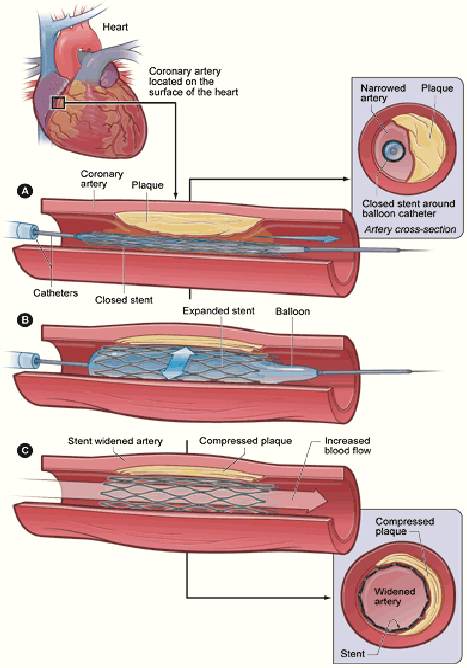DR MILES DALBY
MBBS BSc MD FRCP FESC
TREATMENTS
Coronary Stent
Coronary stenting is a treatment for coronary artery narrowings (stenosis)or blockages performed through a catheter, nearly always under local anaesthetic. The procedure is performed in the cardiac catheterisation laboratory (‘cath lab’ for short) where the patient lies on a procedure table and the X-ray equipment which generates the images is moved around the patient.
The catheter is passed through the artery in the groin (femoral artery) or the artery in the wrist (radial artery) to the heart. The narrowing is crossed with a thin ‘guidewire’ passed through the catheter and following this a coronary stent is placed. The stent itself is a thin metal ‘mesh’ tube of the same calibre as the artery designed to keep the artery open.
Many stents are coated in drugs (drug eluting sents, DES) designed to stop re-narrowing (in stent restenosis, ISR). An uncommon but serious complication of stenting is clot formation in the stent (stent thrombosis). It is very important that patients take blood thinning antiplatelet drugs according to the cardiologists instructions to reduce the risk of thrombosis as much as possible.
As a general rule, if only a small number of coronary narrowings need to be treated stenting may be appropriate, whereas if there are many narrowings needing treatment, a bypass operation may be more appropriate.
Dr Dalby will discuss any proposed procedure with you including its attendant risks and benefits. When appropriate this will involve further discussion in a multidisciplinary meeting so that you may receive the best advice and reach a mutually agreeable management plan.
